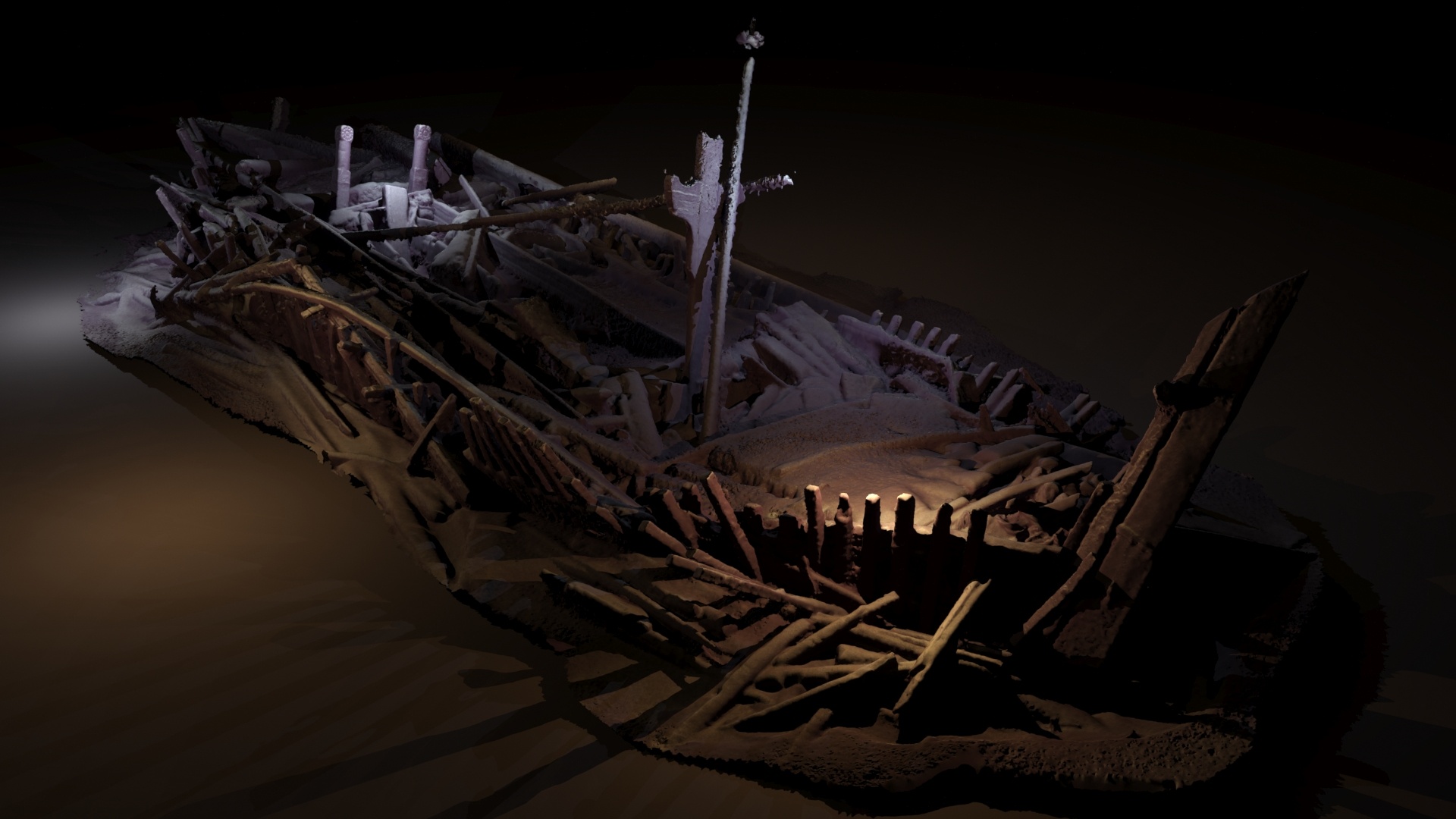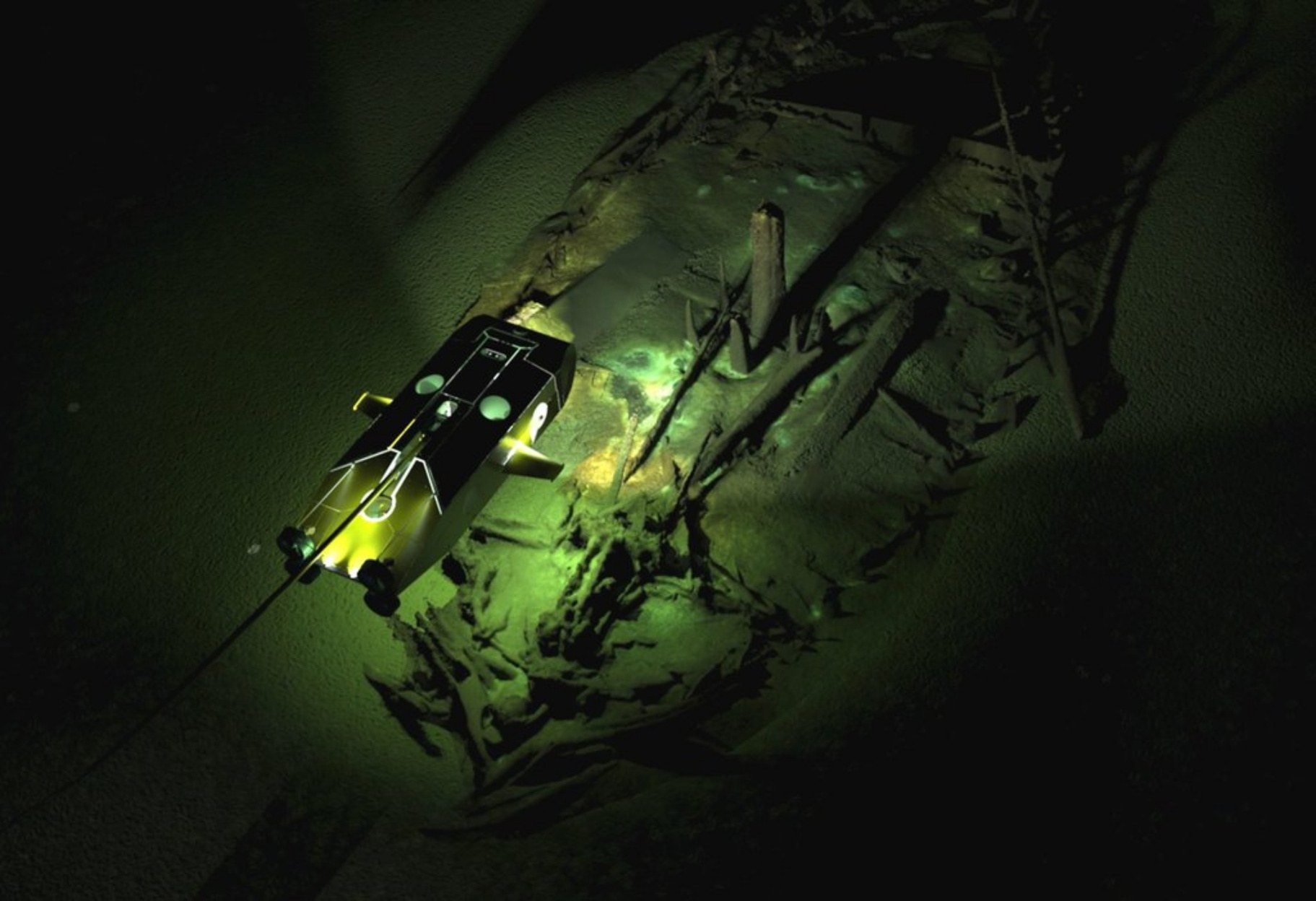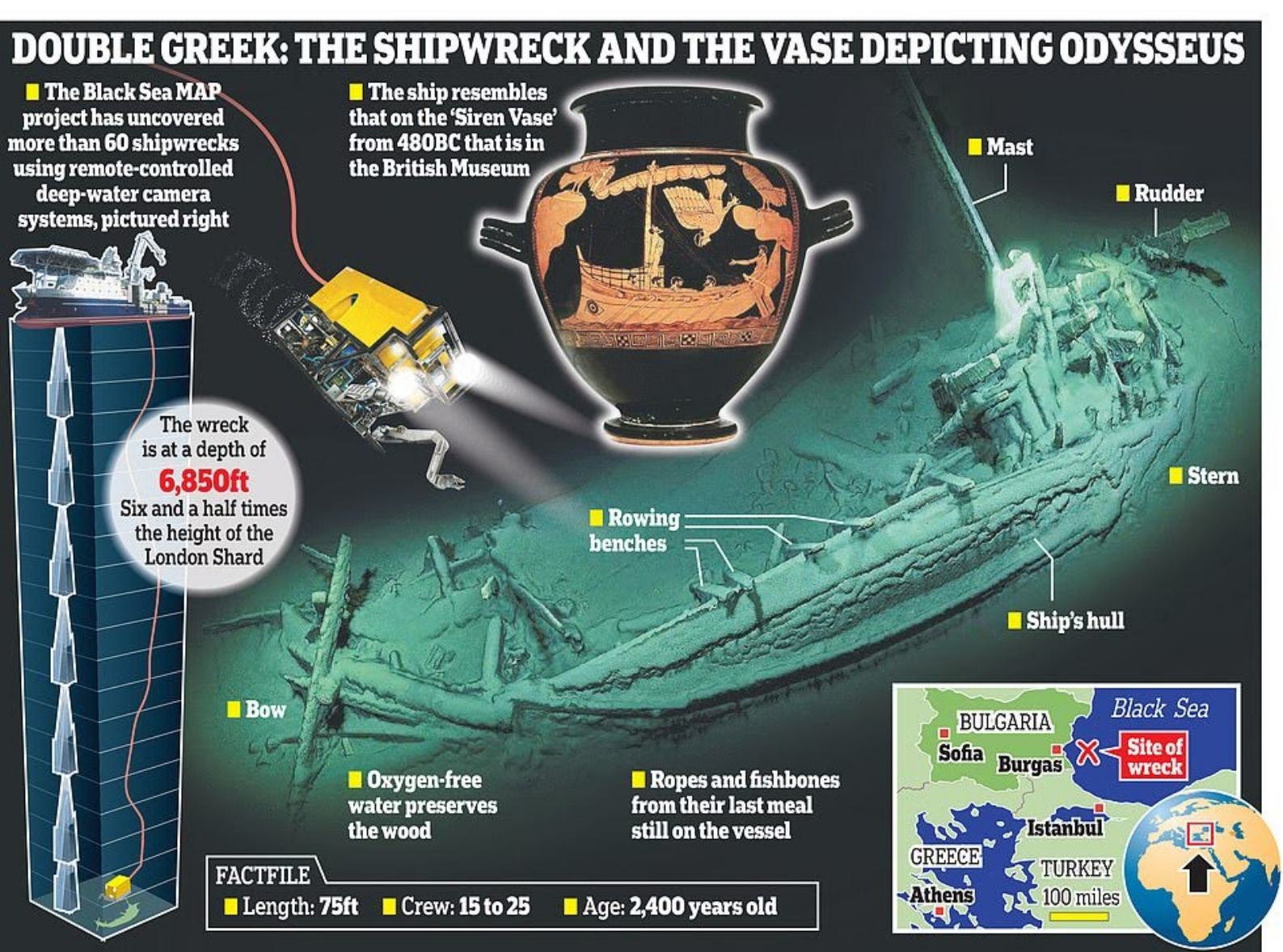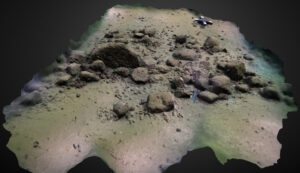In 2016, a dedicated international team of sailors and scientists embarked on a mission to survey the Black Sea (Black Sea Maritime Archaeology Project) for evidence of prehistoric human response to rising sea levels. What they encountered surpassed all expectations. Using sonar and remotely operated vehicles, researchers stumbled upon 41 remarkably well-preserved shipwrecks, spanning over a millennium of time.

The unique water chemistry of the Black Sea played a crucial role in the preservation of these ancient vessels. Unlike many bodies of water, the Black Sea has an exceedingly low oxygen content at certain depths, creating a nearly oxygen-free “dead spot.” This lack of oxygen drastically slows the decay of wood and rope, allowing these ships to remain remarkably intact, even after hundreds of years beneath the waves.
Upon closer examination, it became clear that some of these shipwrecks were not only well-preserved but also retained intricate details of their original construction. Chisel and tool marks on individual planks, as well as intact rigging materials, coils of rope, tills, rudders, and carved wooden decorative elements, provide a window into the craftsmanship of seafarers from centuries past.
One of the most remarkable aspects of this discovery is the wide range of time periods and civilizations represented by the shipwrecks. Dating from the 9th century to the 19th century, these vessels include Byzantine, Ottoman, and medieval Italian ships. Furthermore, the cargo carried by these merchant transports offered valuable insights into the extensive trade networks of the time, with goods ranging from precious metals to spices.

What makes these findings even more intriguing is the explanation behind the shipwrecks’ demise. It is believed that violent storms were the culprits responsible for sinking these vessels, rather than battles or encounters with buccaneers. The fierce weather and unpredictable nature of the Black Sea’s storms proved to be a formidable adversary for these ancient mariners.
This groundbreaking survey was conducted by a team of British, American, and Bulgarian scientists, who utilized cutting-edge underwater mapping technologies. Two remotely operated vehicles were employed to capture high-resolution photos, videos, and laser measurements of the shipwrecks. These meticulous visual and spatial records were then transformed into three-dimensional models, providing researchers and enthusiasts alike with an immersive experience of these ancient relics.
In addition to the invaluable insights gained from the shipwrecks themselves, the team also collected core samples from the Black Sea’s sea floor. These samples would undergo rigorous analysis, allowing researchers to discover how prehistoric peoples navigated and adapted to the ever-changing environmental conditions.
Interestingly, the Black Sea “dead spot” discoveries didn’t not stop there. In 2018, the researchers discovered the world’s oldest intact shipwreck at this isolated Black Sea region. The ship, believed to be around 2,400 years old, is thought to be a Greek trading vessel resembling the one in which the legendary Odysseus sailed.

The ship is estimated to be from the classical period, dating back to around 400 BC. It is a wooden vessel, measuring around 75 feet long, and has been remarkably well-preserved, with its mast, rudder, and rowing benches still intact. The researchers also found numerous ancient pots, jars, and amphorae, indicating a cargo of various goods.
Researchers believe that the ship had a mixed Greco-Phoenician crew and was likely involved in trade routes in the ancient world. It may have sailed from the Black Sea to destinations in the Mediterranean, carrying goods such as wine and olive oil.
The findings in the “dead spot” of the Black Sea have not only seized the imagination of scientists but also reignited interest in maritime archaeology and the mysteries of the past. These remarkably well-preserved shipwrecks offer a rare opportunity to piece together the seafaring history of the region being a gateway to the lives and livelihoods of those who once ventured upon these treacherous waters.
As we dig deeper into the secrets of the Black Sea’s depths, we not only uncover fragments of vessels lost to time but also connect with the struggles, triumphs, and cultural exchanges of civilizations long gone. With each shipwreck, a chapter of history is unveiled, reminding us of the interconnectedness of the human experience and the precious remnants that lie beneath the waves.



